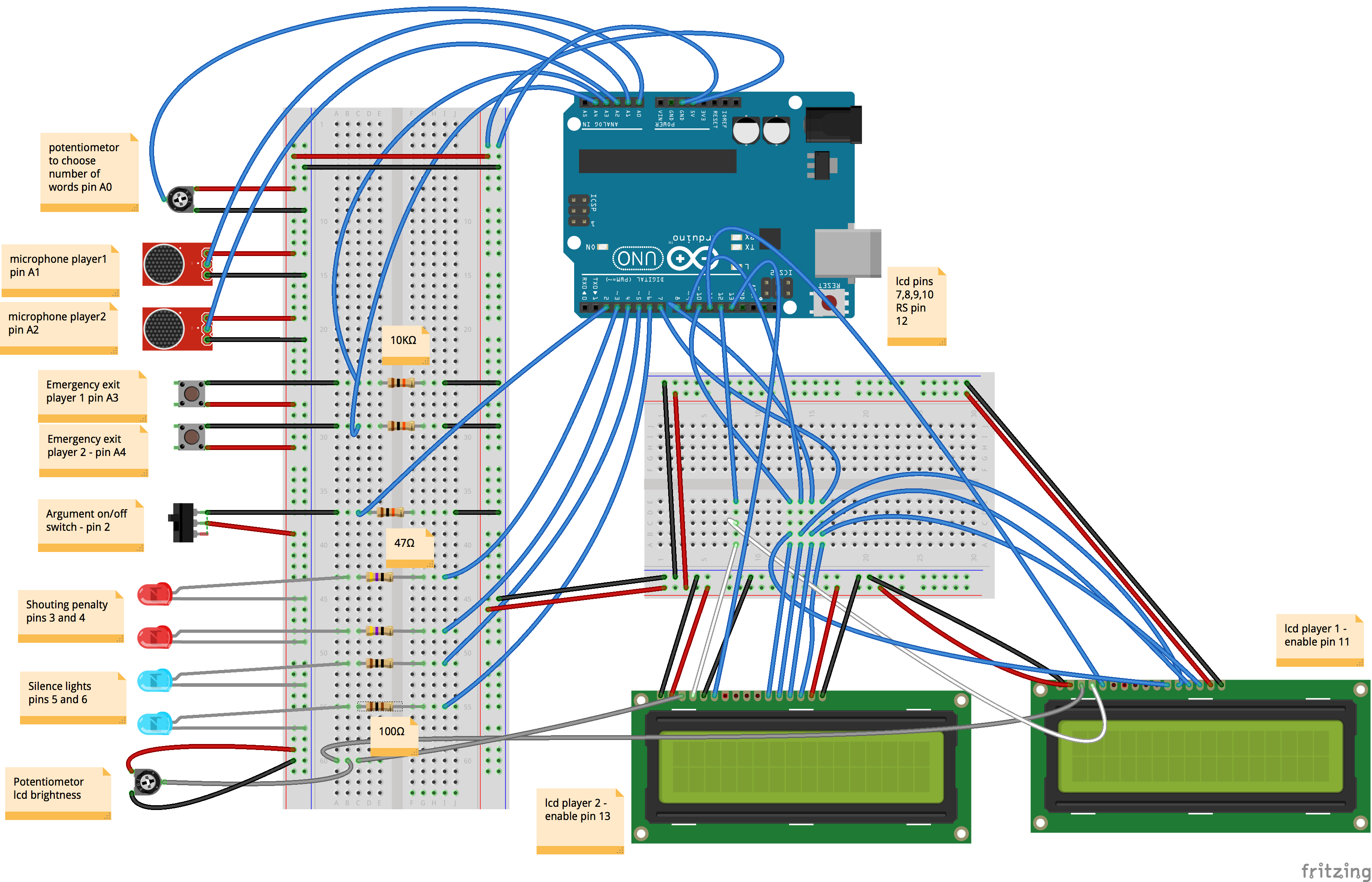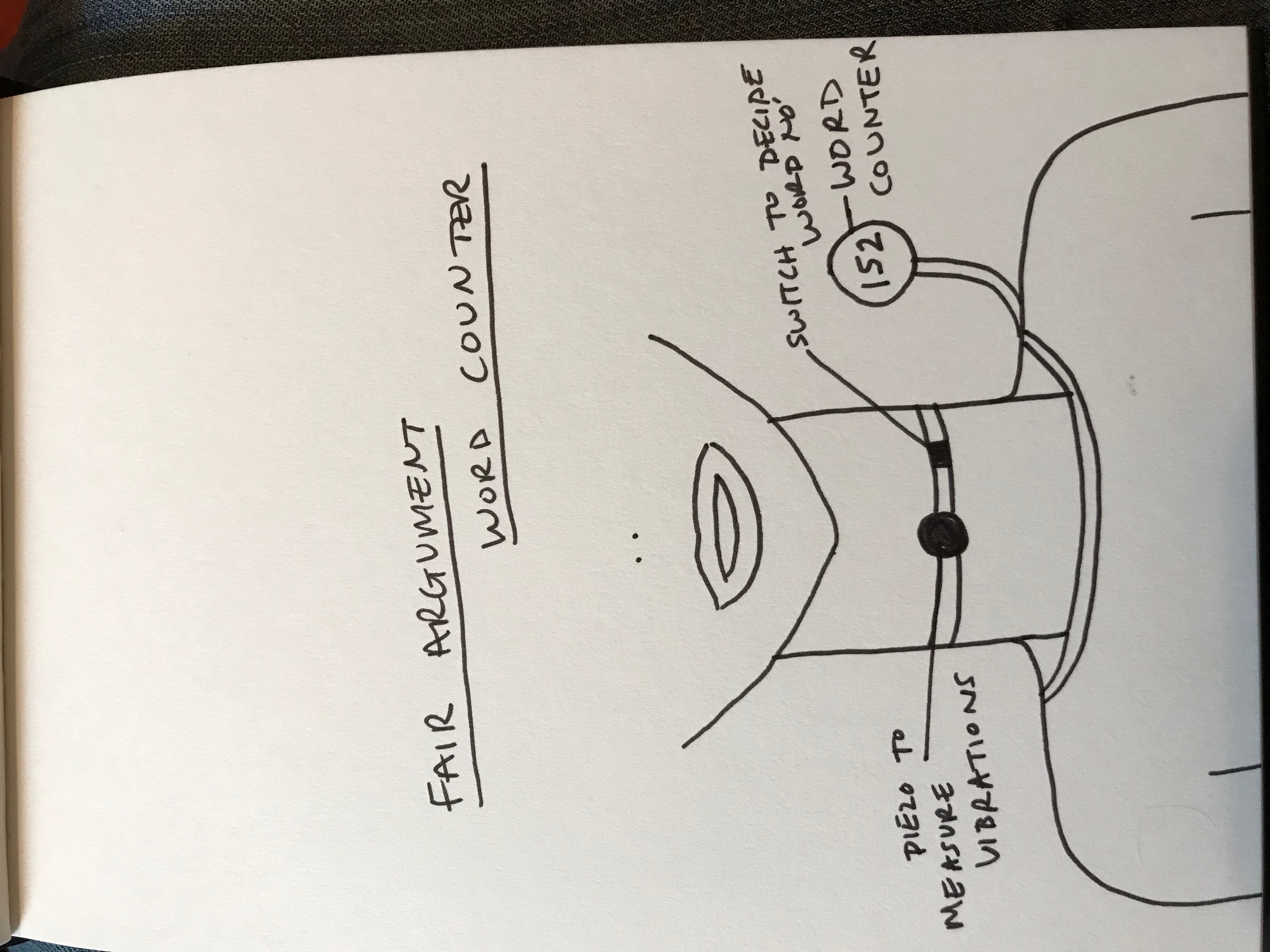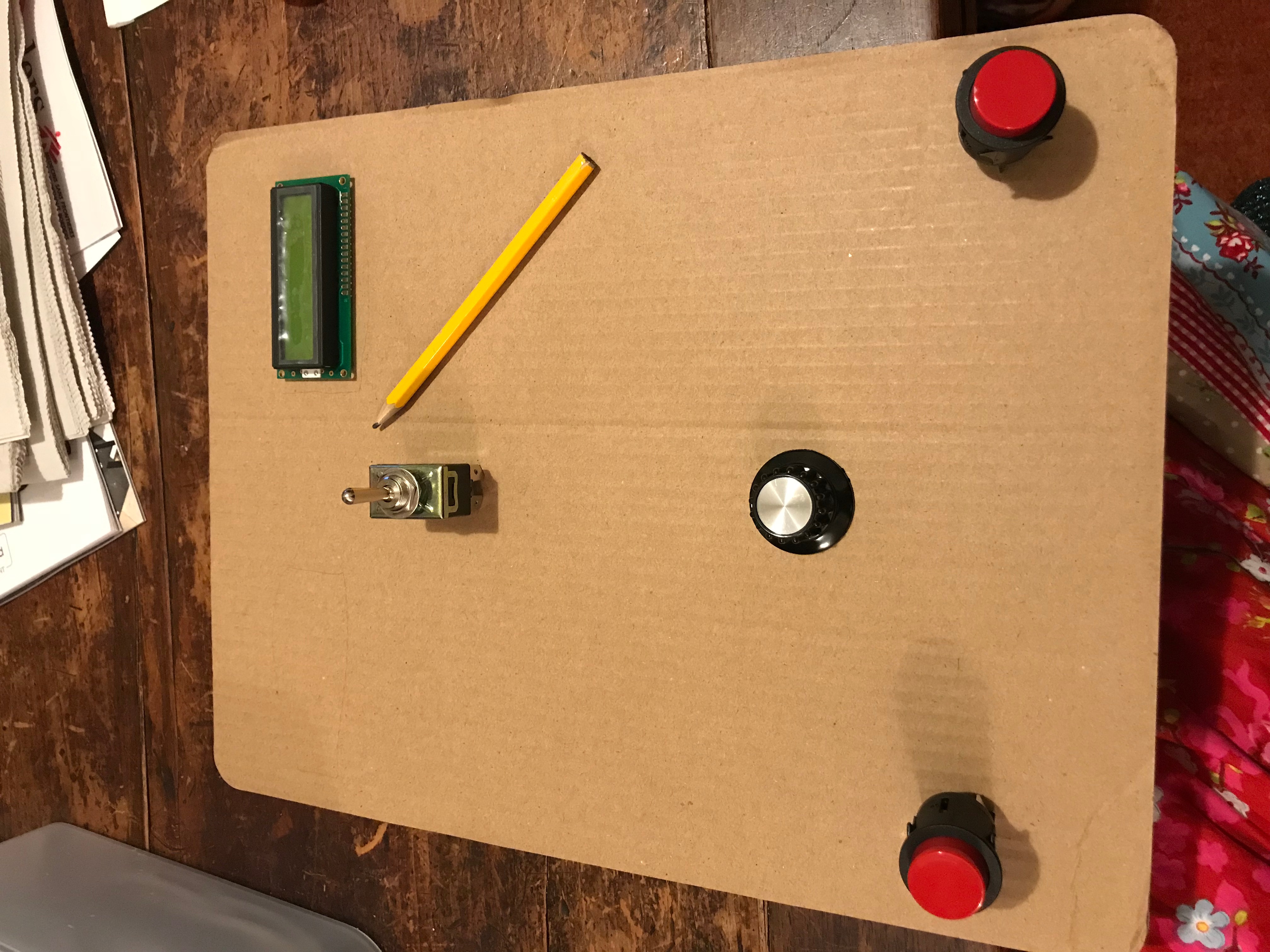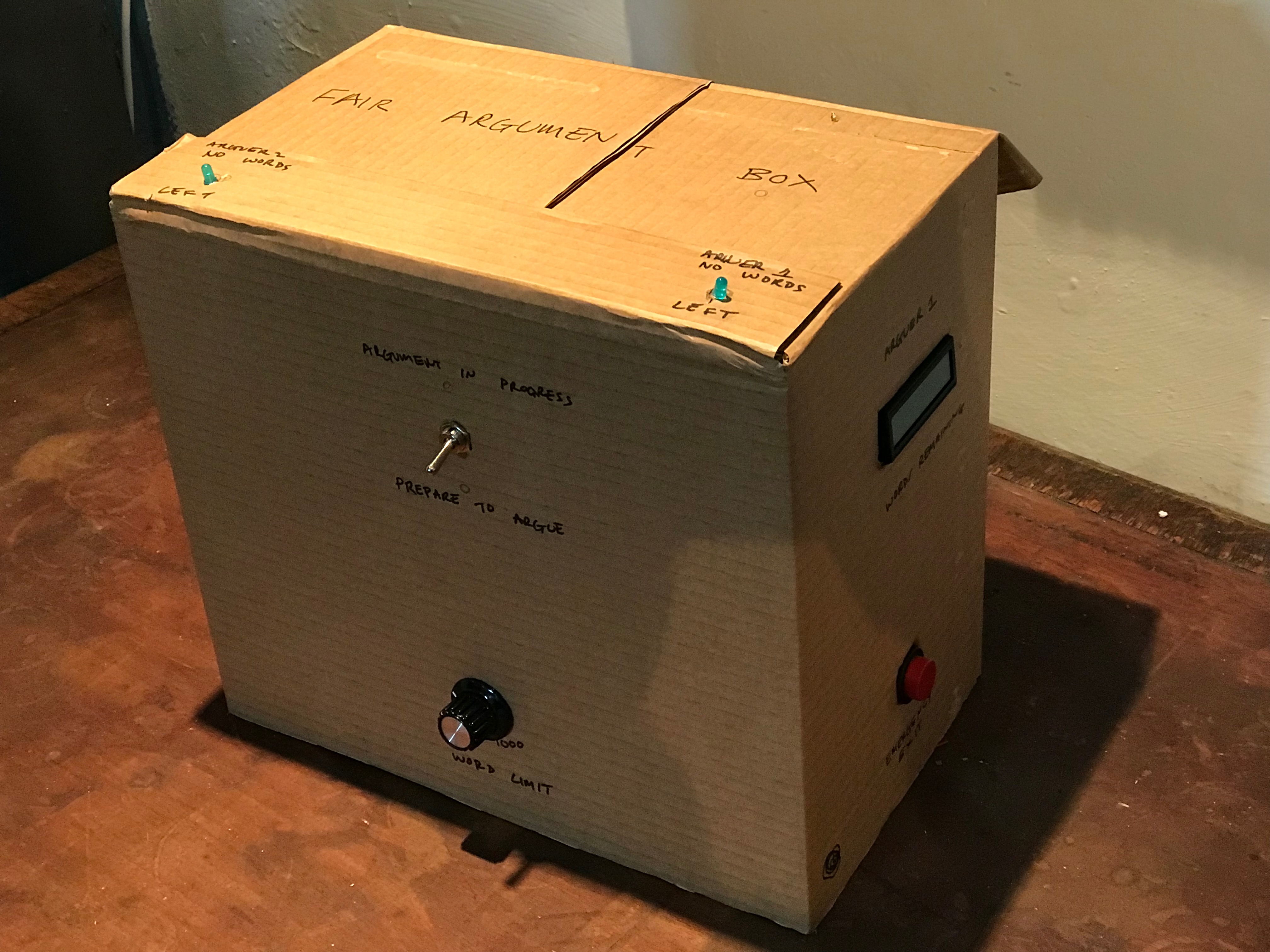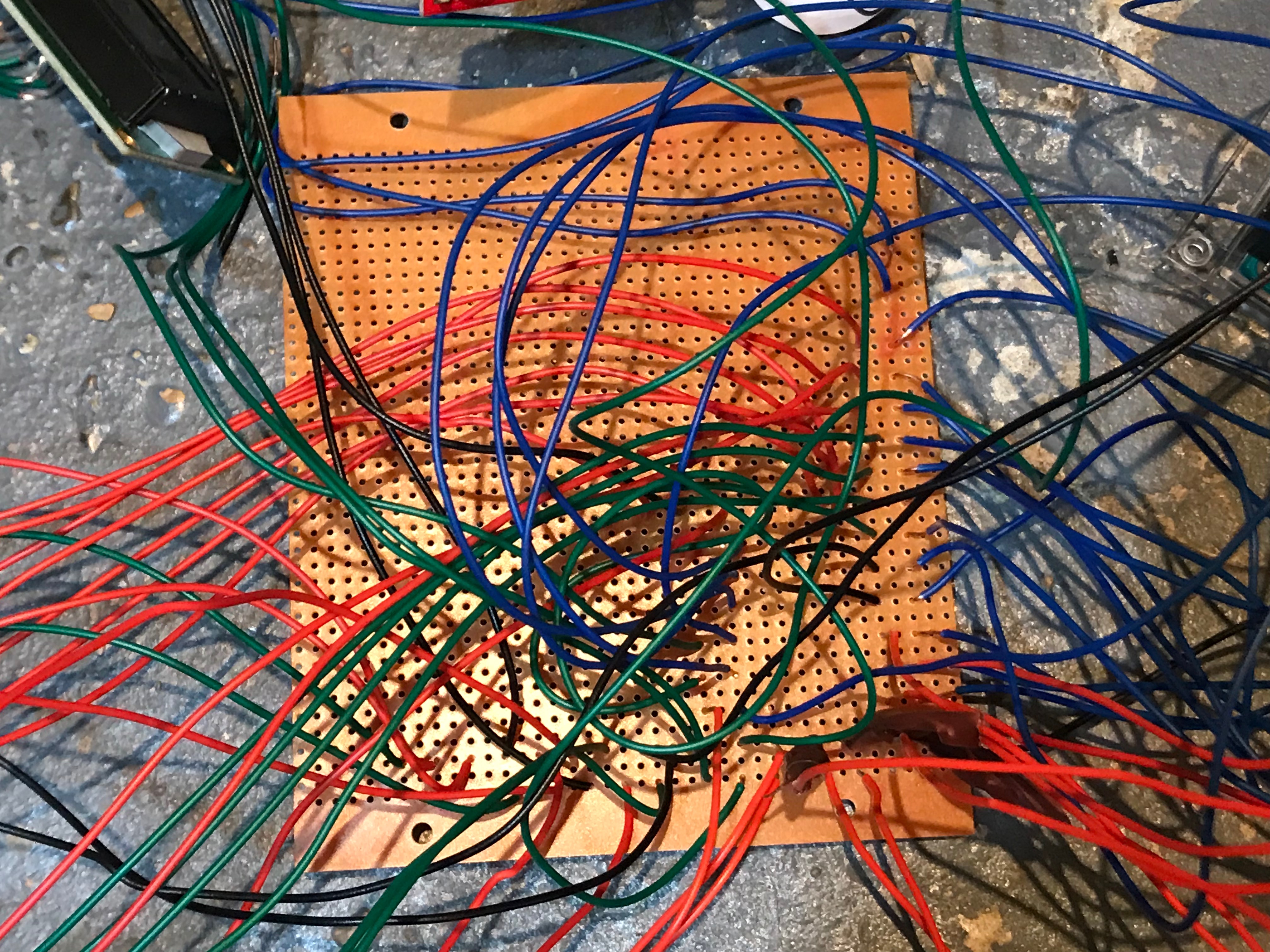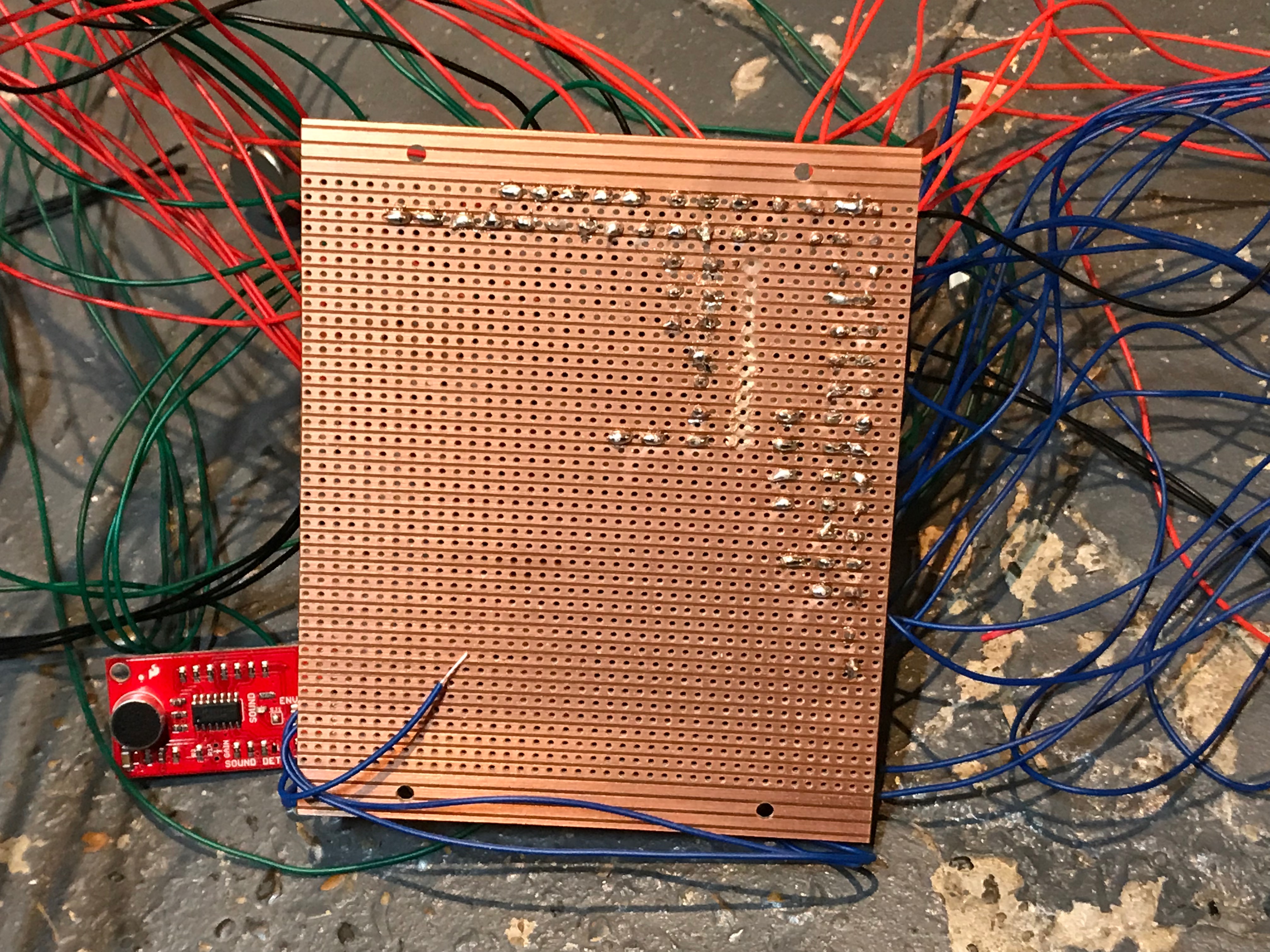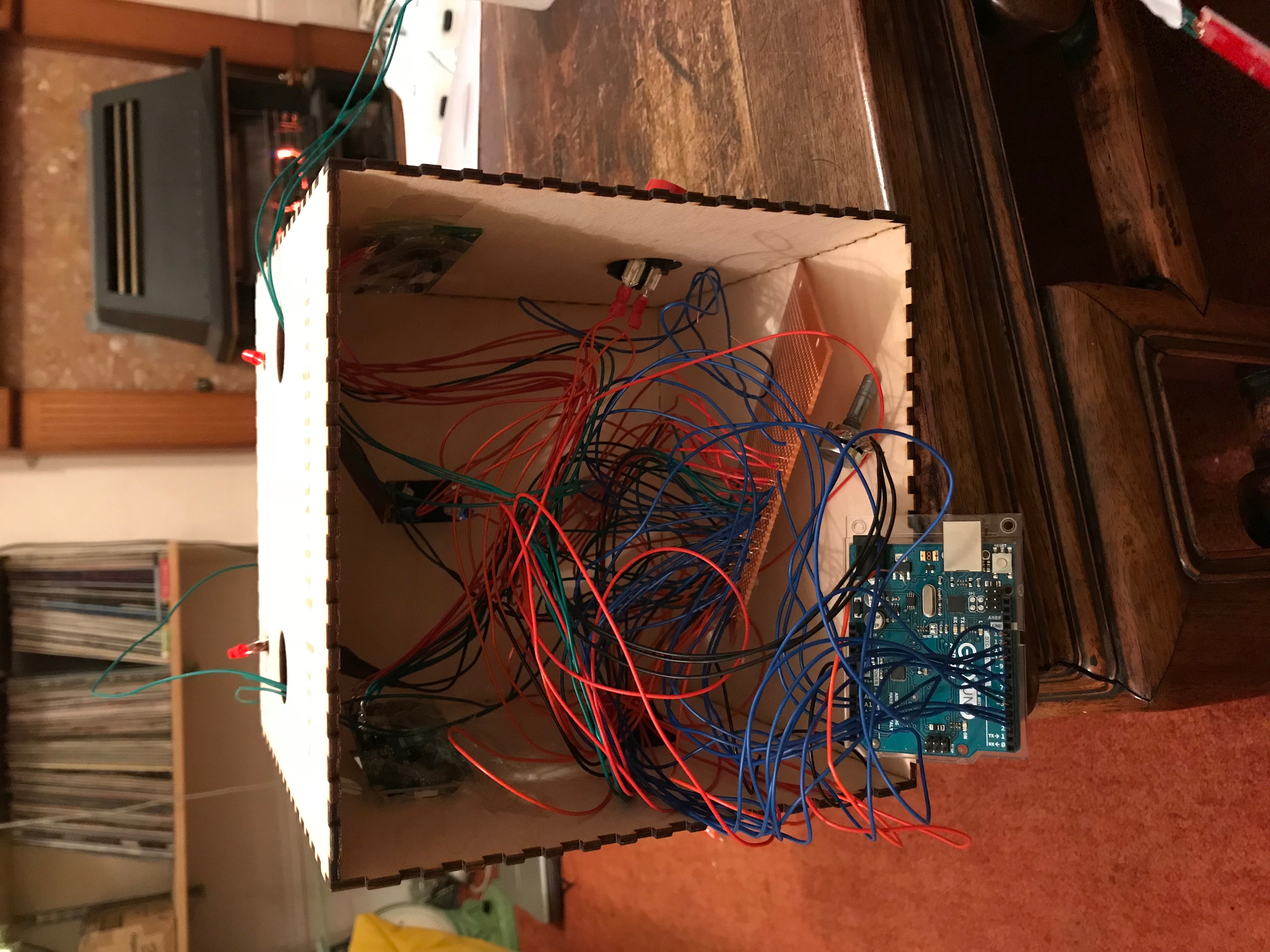The Argument Box
Sick and tired of pointless arguments? Want to finally have a fun and fair argument? Look no further! The Argument Box is a tool for two arguers to resolve their conflicts in a playful and constructive way.
produced by: Jesse Wolpert
The Idea
This project is an attempt to take something that happens in everyday life, in an unstructured organic way, and to reimagine it in a structured environment. It is the first in a series of work that seeks to understand what happens when we formalise an informal process. Since I like to argue, I have chosen to formalise the process of arguing. I want to investigate whether formalising an argument can lead to to a more produtive and satisfying resolution.
A 14 year study of 79 married couples in America (Gottman 2013) showed that the key to relationship success is having productive arguments. Productive arguing relies on two crucial elements:
- The arguers talk immediately and openly about their conflicts.
- The arguers have open minds, take responsibility and listen to each other.
I have tried to build a machine to create an environment for productive arguments using the above criteria. As I am also concerned about fairness, I have chosen to monitor the arguers wordcount as a means to ensure equal speaking time.
How it Works
Two arguers decide on an argument topic
Together they select the number of words allowed for the argument (between 1 and 1000)
They must stop speaking when their words are all used up
They are penalised for shouting
They can exit the argument at any time if they both agree
Design Considerations
The machine needed to be readily available to use at any time to fulfil criterion number one; so the box is small enough to sit in the corner of a room and is easily portable to the desired argument place.
The design was intentionally comic and playful to diffuse the tension that conflict brings and encourage immediate resolution. The red colour scheme was chosen to reflect the dual nature of arguments encompassing both rage and love.
For the second criterion I made each arguer responsible for the words they speak by creating a visible word count which they must not exceed. I deliberately only allowed arguers to see their own word count to try to diminish the element of competition and increase awareness of their own arguing behaviour.
I capped the number of words to 1000 to ensure that arguers would be reflective and thoughtful about what they chose to say. In my practice arguments I found that a ten word argument can often be very productive.
The idea of the emergency exit evolved as a result of testing the box. Some arguments tend quickly to volatility and the emergency exit is a way to recognise this and try to stop and recommence arguing in a more constructive manner.
I found that sometimes people needed to practice arguing before they chose a 'real' arugment. Therefore the final box will come with instructions and a list of practice argument ideas for different categories of arguers – couples, siblings, parent and child, friends etc.
The Box
The box was laser cut based on the design from the makercase.com website and the funnel holders were designed and 3d printed so as to allow the copper tubes, holding the speaking funnels, to swivel easily.
The Circuit
The main challenge was to be able to count the words spoken by the participants. Initially I wanted to use throat vibrations using an amplified piezo – but I was unable to obtain reliable results. I subsequently tested four different electret microphones with varying levels of sensitivity. I discovered that I was only able to accurately measure word count if I smoothed the voltage output. Ultimately I chose to use SparkFun’s sound detector as it directly provided an envelope output that traced the amplitude of the sound. Using this output, and testing on a range of participants, I was able to calibrate from within my code to accurately reflect the arguers words spoken.
The four switches, one potentiometer, four leds, two lcds and two microphones used all but one of the available Arduino Uno pins. By daisy chaining the two lcd display screens I did not have to extend the number of pins available on the Arduino Uno.
Arduino code can be found here: https://github.com/jessewolpert/ArgumentBox
Future Development
I initially wanted to have a physical device rotate over the arguers mouth when their words were finished. I was unable to incorporate this as the servo motor vibrations registered on the other arguer's microphone. I would like to try to find a way to work around this problem.
I would like to transcribe the arguers' words and have it print out at the end of the argument analysing the use of language for each arguer.
The box is currently installed in a friend's house where they are using it each time they have an argument and documenting the issues and outcomes. I hope to use this research to improve the box further.
The next organic process I plan to formalise is: Fair Crisp Sharing.
References
http://ift-malta.com/wp-content/uploads/2013/01/gottman-predictor-of-divorce.pdf































































